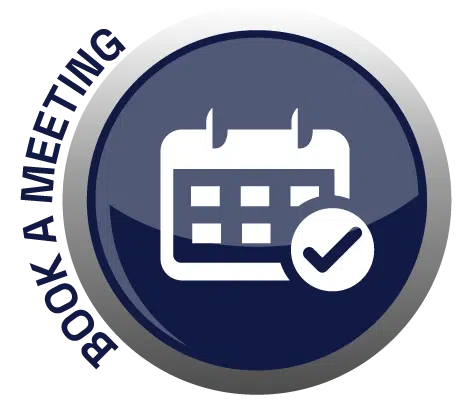You’ve heard about the 7 steps of web development, but do you truly understand how each phase contributes to the success of your online presence? From defining project scope to tailoring content for your audience, each step is a crucial piece of the puzzle. But what happens beyond these initial stages? Stay tuned to uncover the intricacies of website development and deployment, where your vision starts to take shape in the digital realm. Discover : What Are the 7 Steps of Web Development?
Key Takeaways
- Project scope definition outlines goals and target audience.
- Website structure planning includes sitemap creation and user experience design.
- Branding element design involves crafting logos, colors, fonts, and imagery style.
- Tailored content creation focuses on custom content, SEO optimization, and audience relevance.
- Website development entails defining scope, planning structure, designing branding, creating content, and developing the website.
Project Scope Definition
When defining the project scope, start by clearly outlining the specific goals and objectives for the website development endeavor. Understand the purpose and target audience of the website to align with their preferences. Gather information on the business goals, target audience preferences, and key performance indicators to establish a solid foundation.
Analyze the main goals of the website project, ensuring they resonate with the target audience. Define the functionalities and technologies required for different website types to meet the specific needs effectively. Create a detailed plan to prevent unnecessary resource spending on unexpected challenges.
Prioritize clarity and precision in outlining the scope to ensure all stakeholders are on the same page. By defining the project scope meticulously, you set the stage for a successful website development process that meets the needs of both the business and its audience.
Website Structure Planning
During the initial phase of website development, you will focus on planning the structure of the website to ensure a logical and user-friendly layout. This stage is crucial as it sets the foundation for the entire development process. By carefully designing the website structure, you can enhance user experience, improve navigation, and streamline content delivery. Consider the following elements when planning your website structure:
| Website Structure Planning | Details | Importance |
| Sitemap creation | Mapping out main platform areas | Guides navigation |
| User experience design | Ensuring user-friendly layout | Enhances user satisfaction |
| Content organization | Structuring information logically | Improves content accessibility |
Branding Element Design
In the process of planning your website structure, the next step involves designing the branding elements to establish a cohesive and recognizable visual identity for your website. This step is crucial in creating a lasting impression on your visitors and building trust in your brand.
To effectively design your branding elements, consider the following:
- Logo Design: Craft a unique and memorable logo that represents your brand values.
- Color Palette Selection: Choose a color scheme that resonates with your brand and evokes the right emotions.
- Typography: Select fonts that align with your brand voice and ensure readability across different devices.
- Imagery Style: Define the style of images and graphics that will be used on your website to maintain consistency.
- Brand Guidelines: Establish clear guidelines on how your branding elements should be used to maintain a cohesive brand identity.
Tailored Content Creation
Crafting tailored content for your website involves creating custom text, images, and multimedia elements that cater specifically to your target audience’s needs and preferences. By considering your audience’s interests and behaviors, you can enhance user engagement and drive conversions. Utilizing various content types, optimizing keywords, and encouraging purchasing decisions are pivotal in establishing a strong online presence.
| Emotion | Strategy |
| Excitement | Use vibrant colors and engaging visuals to captivate your audience. |
| Trust | Provide authentic testimonials and reviews to build credibility. |
| Connection | Share personal stories and experiences to foster a sense of belonging. |
Website Development and Deployment
When initiating website development and deployment, meticulous planning and strategic execution are essential for a successful online presence. To streamline the process, consider the following:
- Define Project Scope: Understand business goals, target audience preferences, and key performance indicators.
- Plan Website Structure: Create wireframes, user conversion funnels, and key conversion points for both desktop and mobile versions.
- Design Branding Elements: Ensure consistency, use imagery and videos for user experience, and enhance brand recognizability.
- Create Tailored Content: Develop content tailored to your audience, optimize keywords, and encourage user engagement.
- Develop the Website: Collaborate with backend and frontend developers, incorporate scalability, research-backed insights, and features based on your target audience and industry.
Frequently Asked Questions
How Can I Ensure My Website Is Accessible to Users With Disabilities?
To ensure your website is accessible to users with disabilities, focus on utilizing alt text for images, creating keyboard-friendly navigation, implementing proper heading structures, maintaining color contrast, and providing text alternatives for multimedia content.
What Are the Best Practices for Optimizing Website Performance and Speed?
To optimize website performance and speed, ensure efficient coding practices, minimize HTTP requests, compress images, leverage browser caching, and prioritize critical content loading first. Utilize tools like GTmetrix and Google PageSpeed Insights for analysis and improvement.
How Do I Protect My Website From Cybersecurity Threats and Hacking?
To protect your website from cybersecurity threats and hacking, ensure regular software updates, use strong passwords, implement SSL certificates, employ firewalls and security plugins, conduct security audits, back up data regularly, and educate users on safe browsing practices.
What Strategies Can I Use to Improve Search Engine Optimization (Seo) for My Website?
To improve SEO for your website, focus on strategic keyword placement, quality content creation, meta tags optimization, internal linking, mobile-friendliness, and page speed optimization. Regularly update content, monitor analytics, and build quality backlinks.
How Can I Integrate Social Media Platforms Effectively Into My Website for Marketing Purposes?
To integrate social media platforms effectively into your website for marketing, you must strategically place social media icons, enable sharing options, embed feeds, utilize plugins, and engage with users. Enhance brand visibility and interaction.
Conclusion
In conclusion, the 7 steps of web development provide a structured approach to creating a successful website.
By defining project scope, planning website structure, designing branding elements, creating tailored content, and developing the website with precision and industry insights, you can ensure a user-friendly and engaging online presence.
Following these steps will help you achieve your goals and deliver a website that resonates with your target audience.







Add Comment